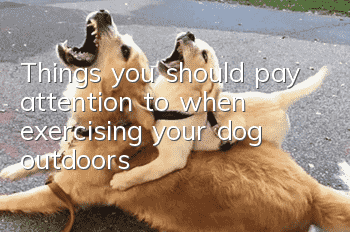Samoyed appearance characteristics and pictures

Samoyed (Samoyed), also known as Samoyed, was originally a dog breed bred by the Samoyed tribe, the indigenous people of Siberia. Alert, strong, flexible, beautiful, noble and elegant, well-behaved and cute, with a very eye-catching appearance and strong physique, he is known as the "Smiling Angel". He is naughty and smart before he is one year old. Male dogs are 53.3-59.7 cm, and female dogs are 48.3-53.3 cm.
Head
The skull and muzzle are proportional to the body shape and skull size, and are slightly triangular in shape. The muzzle must have a certain thickness. Beards must never be cut off.
Ears are strong and thick; erect; triangular and slightly rounded at the tips. Ear size is determined based on head size and overall size. The distance is relatively wide, close to the outer edge of the head, and appears flexible; it is covered with many hairs and the hair is plump. The mobility of the ears is good,
There are hairs in the ears, and the hairs in front of the ears are numerous and erect. The length of the ears should be the same as the distance from the inside of the ear to the outer corner of the eye.
It is better for the eyes to be darker in color, set wider apart and deeper; almond-shaped; the lower eyelid points to the base of the ear. Dark eye circles are ideal. Round or protruding eyes are a fault; blue eyes are a disqualification. A black nose is ideal, but brown, liver, and charcoal gray are also acceptable. Sometimes, the color of the nose changes with age and climate. Teeth strong, regular, strong, scissors bite. The upper and lower jaws should not be too prominent. The lips are preferably dark and fleshy, with the corners of the mouth turned upward, as if smiling. The lips at the corners of the mouth should not droop.
Body
The neck is strong and the Samoyed is muscular. It is held up proudly and appears full of strength. When standing at attention, the noble head is supported on the sloping shoulders. The neck joins the shoulders to create a graceful arch. The chest is deep, and the ribs expand outward from the spine and become flat on the sides, which does not affect the movement of the shoulders and allows the Samoyed to move freely with the forelimbs. It can't be barrel chest. The ideal depth should be up to the elbow, with the deepest part behind the forelegs, about the ninth rib. A sufficiently deep chest allows the heart and lungs in the chest to be protected by the body. The depth of the chest is greater than the width.
The waist and withers are the highest point of the back, and the waist is strong and slightly arched. The back is straight from withers to loin and of medium length. The proportions of its body are "nearly square", meaning that its length is approximately 5% greater than its height. Females may be slightly longer than males. The abdominal muscles are tight and in good shape, forming a graceful curve with the back chest (abdominal tightening). The croup is slightly sloping, full and must extend very slightly to the base of the tail.
The tail is of moderate length, and if the tail is drooping, the length of the tailbone should extend to the hock. The tail is covered with long hair, which is rolled over the back when alert, or rolled to one side when resting., the tail will be lowered when a Samoyed is present. The base of the tail should not be too high or too low, and the tail should be flexible. Two curled tails are a fault. The tail is raised higher than the back only once during competition.
The two forelimbs are parallel, straight and strong. Because the chest is relatively deep, the forelimbs are longer. The height from the ground to the elbow is approximately 55% of the height from the ground to the upper edge of the shoulder blade. Dogs with too short limbs do not meet the standards. The shoulders should be long, sloping at an angle of about 43°, and strong. The distance between the upper edges of the shoulders and feet is approximately 2.5-3.8 cm (1-1.5 inches). The thighs are well developed, the knee joint is at an angle of approximately 45 degrees to the ground, and the hock joint is at the lower 1/3 of the shoulder height.
Viewed from the rear, when the dog is standing naturally, the hind legs are parallel. Straight or cow-like knee joints do not meet the criteria. It can only be determined if the knee joint is bovine when the dog is fully exercised. Dogs with too short limbs do not meet the standards. Shoulders strong. The distance between the upper edges of the shoulder blades is approximately 2.5 to 3.8 centimeters (1 to 1.5 inches). The feet are large, long, and relatively flat, resembling a hare's feet, with the toes slightly apart; the tips of the toes are arched, the pads are thick and hard, and there are protective hairs between the toes. When standing naturally, the feet should neither abduct nor turn in, but should be vertical. However, when pulling a car, the feet can turn in slightly. Feet that are outstretched, pigeon-like toes, rounded or cat-like feet, and excessively spread toes are all faults. Hair on the feet is not required and is more abundant in female dogs than in male dogs.
- Is the super reliable anthelmintic drug easy to use? Sharing the experience of the shit shoveling officer~
- My dog's mouth is smelly and drooling, what can I do?
- How should Shar-Pei be trained? Introduction to Shar-Pei training methods!
- What is the reason why dogs suddenly have weakness in their hind legs in winter?
- How to give potions to dogs
- What is the process of giving birth to a dog?
- What to do if your Norwegian Elkhound has bad mouth
- How to treat otitis externa in dogs
- What are the strength training methods for Tibetan Mastiffs?
- Why is the dog losing hair?



